
- Home
- Age
- Brand
- American Art Decor (14)
- Antique (12)
- Coca Cola (11)
- Coca-cola (11)
- Dechane's (9)
- Esso (16)
- Firestone (14)
- Goodyear (13)
- Handmade (21)
- Madura Coats Treads (11)
- Michelin (8)
- Mobil (13)
- Mobil Oil (11)
- Ovaltine (7)
- Samurai (44)
- Shell (10)
- Signs By Jake (11)
- Texaco (17)
- Unknown (19)
- Winchester (27)
- ... (4556)
- Features
- 3d Effect, Led (8)
- Antique (3)
- Blow Mold (2)
- Decorative (5)
- Embossed (5)
- Embossed, 3d Effect (2)
- Framed (376)
- Framed, Signed (13)
- Gallery Stamps (2)
- Hand Painted (3)
- Handcrafted (3)
- Handpainted (9)
- Irregular Nails (5)
- One Of A Kind (ooak) (70)
- Reclaimed (27)
- Reclaimed, Salvage (8)
- Salvage (5)
- Signed (143)
- Unframed (73)
- Vintage (4)
- ... (4089)
- Material
- Type
- Acoustic (9)
- Baskets (9)
- Bowls (11)
- Boxes (46)
- Furniture (14)
- Kitchen Equipment (25)
- Marquee Sign (13)
- Metal & Ironwork (31)
- Painting (191)
- Paintings (14)
- Plaque (20)
- Plaques / Signs (18)
- Pottery (13)
- Print (22)
- Sculpture (13)
- Sign (50)
- Signs (76)
- Street Sign (19)
- Tools (11)
- Wooden Sign (9)
- ... (4241)
- Year
Unusual Antique Old 1920s Prohibition Speakeasy Secret COCKTAIL Bar Wood Sign
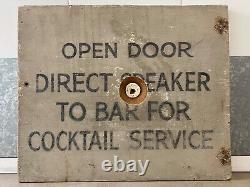
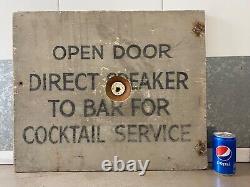
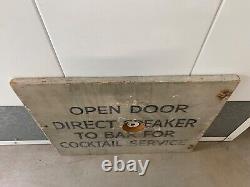
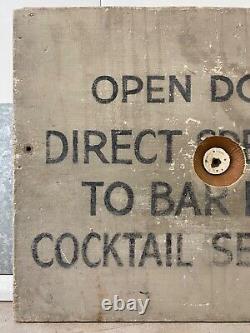
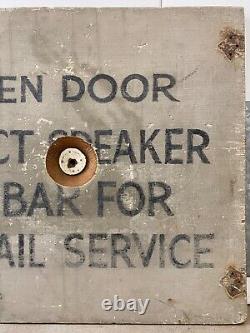
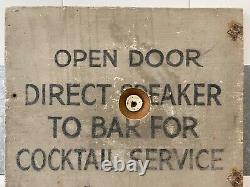
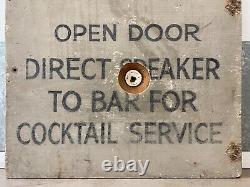
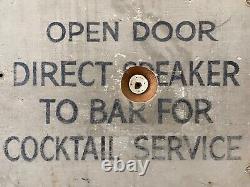
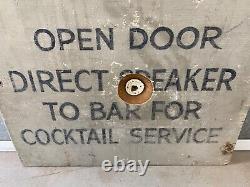
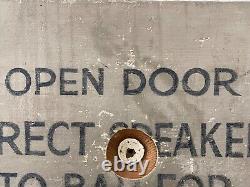
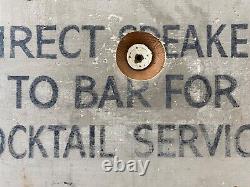
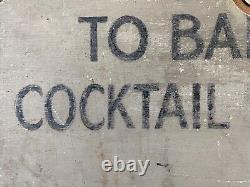
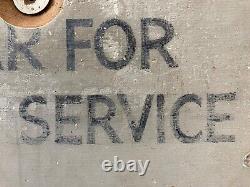
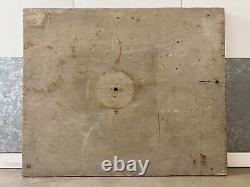
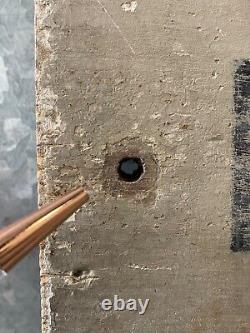
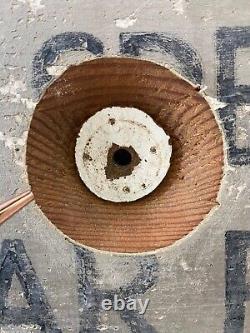
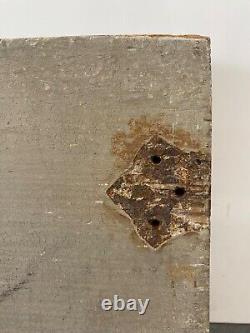
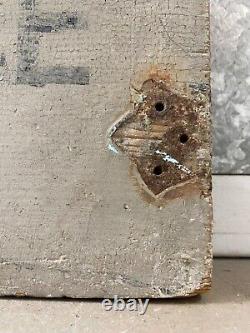
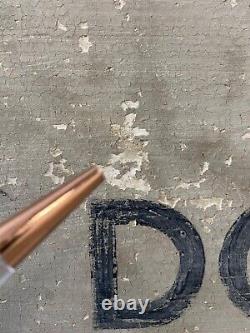
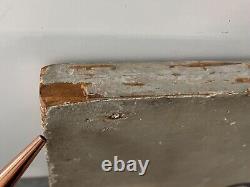
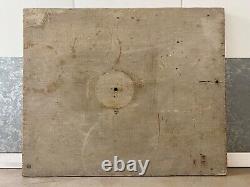

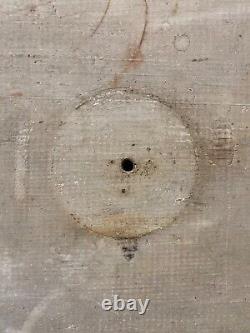
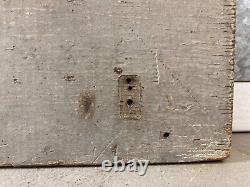


This is a very cool and Unusual Antique Old 1920s Prohibition Speakeasy Secret Cocktail Bar Wood Sign, which includes hidden instructions written on the inside of a nondescript drab gray painted cabinet door. This sign reads: OPEN DOOR DIRECT SPEAKER TO BAR FOR COCKTAIL SERVICE. In the middle of this door, would have been a small speaker which amplified the customer's voice to the secret bar in another room, which would have then presumably placed the cocktail inside of the cabinet, from behind the other side of the wall. Ingenious methods like this were common during the American Prohibition of alcohol, and this is a very clever and interesting concept. This sort of sign and Speakeasy concept would have been quite common in the Chicago area during the Prohibition. You can see on this sign that it once had hinges, and a knob which would have allowed the customer to discretely open and close the cabinet door to place and receive orders. Approximately 18 inches tall x 21 1/2 inches wide x 3/4 of an inch thick. Good condition for nearly a century of age, with expected scuffing, edge wear, paint loss, and staining throughout please see photos. Acquired in Los Angeles County, California. Original Prohibition era speakeasy artifacts are getting much harder to find, and this is an excellent and very decorative example. This sign would be a perfect addition to any tasteful home bar or 1920's inspired cocktail lounge. If you like what you see, I encourage you to make an Offer. Please check out my other listings for more wonderful and unique artworks! When the Mayor of Berlin, Gustav Boess, visited New York City in the fall of 1929, one of the questions he had for his host, Mayor James J.
Walker, was when Prohibition was to go into effect. The problem was that Prohibition has already been the law of the United States for nearly a decade. That Boess had to ask tells you plenty about how well it was working. When the Prohibition era in the United States began on January 19, 1920, a few sage observers predicted it would not go well. Certainly, previous attempts to outlaw the use of alcohol in American history had fared poorly.
When a Massachusetts town banned the sale of alcohol in 1844, an enterprising tavern owner took to charging patrons for the price of seeing a striped pig-the drinks came free with the price of admission. When Maine passed a strict prohibition law in 1851, the result was not temperance. But resentment among the city's working class and Irish immigrant population.
A deadly riot in Portland in 1855 lead to the law's repeal. Now, Prohibition was being implemented on a national scale, and being enshrined in the Constitution no less. What followed was a litany of unintended consequences. This should have come as no surprise with a venture as experimental as Prohibition. It is no mistake that President Herbert Hoover's 1928 description of Prohibition as "a great social and economic experiment, noble in motive and far-reaching in purpose" entered the popular lexicon as the noble experiment.
It was unfortunate for the entire nation that the experiment failed as miserably as it did. Prohibition's supporters were initially surprised by what did not come to pass during the dry era. When the law went into effect, they expected sales of clothing and household goods to skyrocket. Real estate developers and landlords expected rents to rise as saloons closed and neighborhoods improved. Chewing gum, grape juice, and soft drink companies all expected growth.Theater producers expected new crowds as Americans looked for new ways to entertain themselves without alcohol. None of it came to pass. Instead, the unintended consequences proved to be a decline in amusement and entertainment industries across the board.
Restaurants failed, as they could no longer make a profit without legal liquor sales. Theater revenues declined rather than increase, and few of the other economic benefits that had been predicted came to pass. On the whole, the initial economic effects of Prohibition were largely negative.The closing of breweries, distilleries and saloons led to the elimination of thousands of jobs, and in turn thousands more jobs were eliminated for barrel makers, truckers, waiters, and other related trades. The unintended economic consequences of Prohibition didn't stop there. With Prohibition in effect, that revenue was immediately lost. Prohibition led to many more unintended consequences because of the cat and mouse nature of Prohibition enforcement.
While the Eighteenth Amendment prohibited the manufacture, sale and transportation of intoxicating beverages, it did not outlaw the possession or consumption of alcohol in the United States. The Volstead Act, the federal law that provided for the enforcement of Prohibition, also left enough loopholes and quirks that it opened the door to myriad schemes to evade the dry mandate. One of the legal exceptions to the Prohibition law was that pharmacists were allowed to dispense whiskey by prescription for any number of ailments, ranging from anxiety to influenza.
Bootleggers quickly discovered that running a pharmacy was a perfect front for their trade. As a result, the number of registered pharmacists in New York State tripled during the Prohibition era. Because Americans were also allowed to obtain wine for religious purposes, enrollments rose at churches and synagogues, and cities saw a large increase in the number of self-professed rabbis who could obtain wine for their congregations. The law was unclear when it came to Americans making wine at home.
The law that was meant to stop Americans from drinking was instead turning many of them into experts on how to make it. The trade in unregulated alcohol had serious consequences for public health. As the trade in illegal alcohol became more lucrative, the quality of alcohol on the black market declined. On average, 1000 Americans died every year during the Prohibition from the effects of drinking tainted liquor. The effects of Prohibition on law enforcement were also negative. Police officers and Prohibition agents alike were frequently tempted by bribes or the lucrative opportunity to go into bootlegging themselves. Many stayed honest, but enough succumbed to the temptation that the stereotype of the corrupt Prohibition agent or local cop undermined public trust in law enforcement for the duration of the era. The growth of the illegal liquor trade under Prohibition made criminals of millions of Americans. As the decade progressed, court rooms and jails overflowed, and the legal system failed to keep up. Many defendants in prohibition cases waited over a year to be brought to trial. As the backlog of cases increased, the judicial system turned to the "plea bargain" to clear hundreds of cases at a time, making a it common practice in American jurisprudence for the first time. The greatest unintended consequence of Prohibition however, was the plainest to see. For over a decade, the law that was meant to foster temperance instead fostered intemperance and excess.The solution the United States had devised to address the problem of alcohol abuse had instead made the problem even worse. The statistics of the period are notoriously unreliable, but it is very clear that in many parts of the United States more people were drinking, and people were drinking more. There is little doubt that Prohibition failed to achieve what it set out to do, and that its unintended consequences were far more far reaching than its few benefits. The ultimate lesson is two-fold. Watch out for solutions that end up worse than the problems they set out to solve, and remember that the Constitution is no place for experiments, noble or otherwise.

